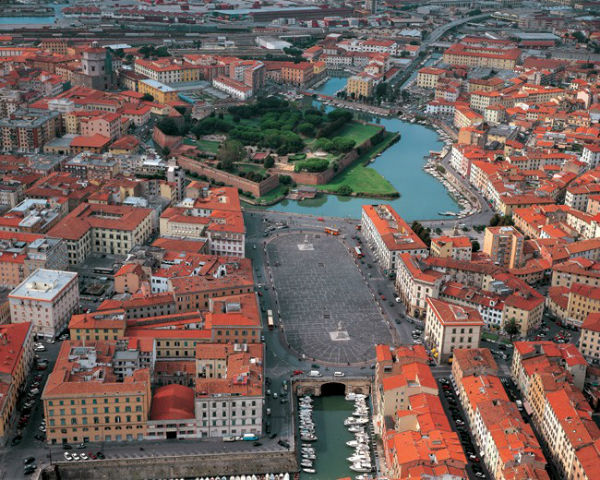History of Livorno – the second largest city in Tuscany – is entirely linked to the fate of its port, one of the largest ports of the Mediterranean coast. Tourists are rarely visiting the city; habitually they are interested in resort towns of the coast, so the Quarter of “New Venice” in the heart of Livorno (under the walls of the old Medici fortress) is surprisingly little known even by Italian travelers. The channels that city residents affectionately call as the “ditches”, small fish restaurants and bars with tables on the narrow promenades that are especially crowded in the evenings create a unique cozy atmosphere worthy of Venice.
It is difficult to believe that 150 years ago this city was called as the “Little Paris” meaning the city of artists and performers; Amedeo Modigliani and Giovanni Fattori worked in Livorno, the school of painting by Macchiaioli whose members have found their inspiration in the atmosphere, colors and culture of this part of Tuscany also originated here. There is a museum with its famous collection of works by Giovanni Fattori (Museo Civico Giovanni Fattori) at Villa Mimbelli built in the XIX century. The museum assembled the works of Italian artists of the impressionist movement of XIX -XX centuries: Fattori, Lega, Signorini and Nomellini.
The most interesting object of the surroundings of Livorno is the Sanctuary of Madonna Montenero, saint patron of Tuscany. The ensemble evolved in the XIV century on the hill where the local shepherd (according the legend) saw the miraculous icon of the Mother of God of Byzantine script; the sanctuary has grown dramatically over the next century as a result of the veneration of icons and became a place of pilgrimage and the necropolis of the great figures and personalities of Livorno and Tuscany.


